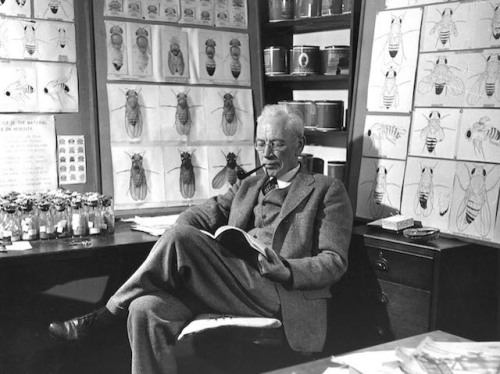
Mapping Life
Today’s genetics researchers navigate through DNA – the molecular instructions for life – almost as easily as we traverse a city aided by online maps. And the basic structure of their guiding maps, like ours, was drawn by pioneers exploring uncharted territory. Alfred Sturtevant – born on this day in 1891 – was one such molecular cartographer, and in 1913 made the first genetic map of a chromosome [tightly wound DNA bundles stored in our cells]. Having realised that genes [crucial DNA segments that code for particular functions] sit in order along chromosomes like stations on a train line, he devised a method for deducing the relative distance between them according to how frequently they were inherited together. Further research on fruit flies helped Sturtevant measure the distance between embryonic organs in a unit appropriately named the sturt, and he received the National Medal of Science in 1967 in recognition of a trailblazing career.
Written by Anthony Lewis
- Image courtesy of the Archives, California Institute of Technology
- Image copyright held by the Archive, California Institute of Technology. Reproduced with permission.
You can also follow BPoD on Instagram, Twitter and Facebook
Archive link






Комментариев нет:
Отправить комментарий